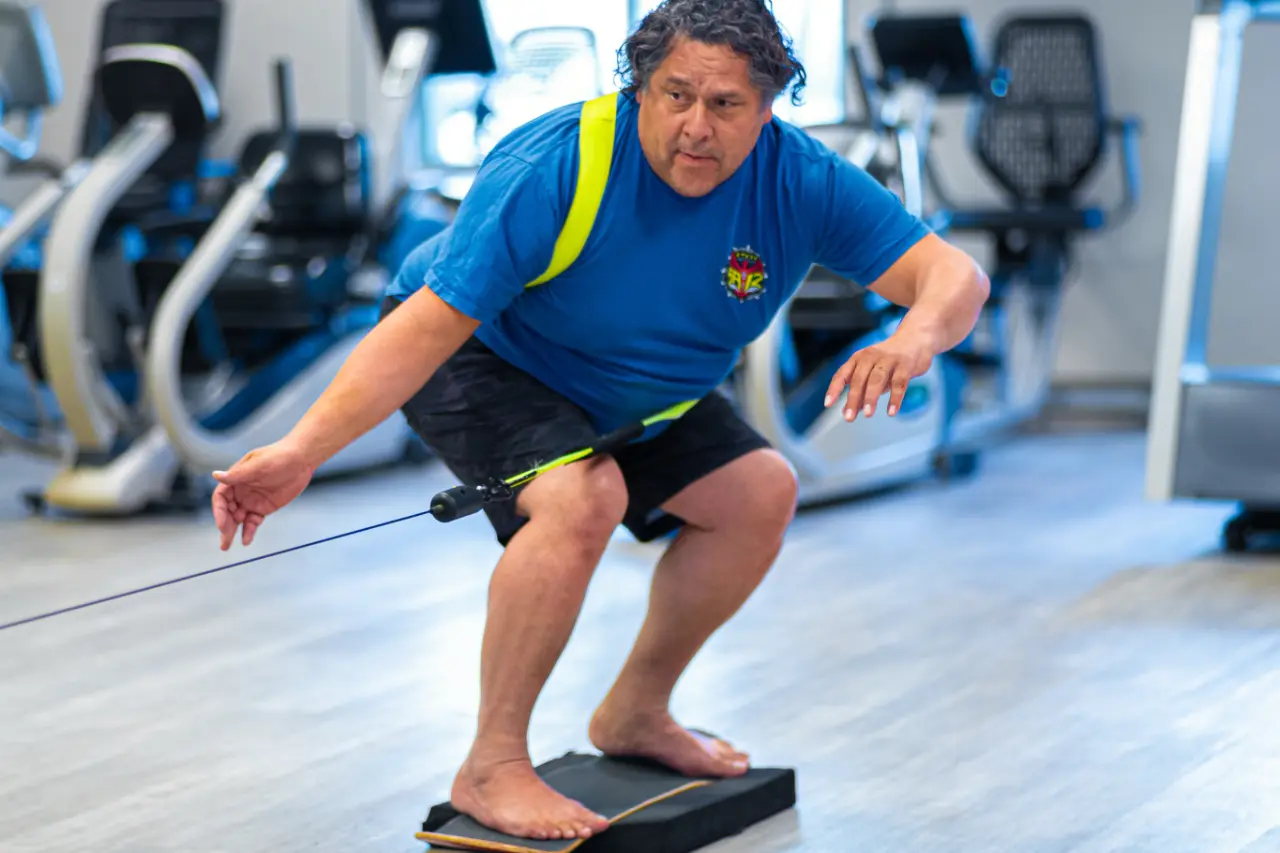I’ve been fortunate to spend my life skateboarding on and off. I got my first skateboard as a child, and, to this day, I still share the same passion about skateboarding.
It’s great going to the skateparks and seeing groups of skaters sending it and trying these big, new, innovative tricks. It’s not uncommon to see skaters get banged up and hop back on their boards, but now I want to help them skate better and help them regain the strength, mobility, and stability needed to endure the demands of the sport following injury. I value my understanding of the skills required to perform at the highest level in skateboarding and enjoy creating unique sport specific training within the clinic.
2 Types of Skateboarding
Skateboarding is really an endurance-based activity. There are a lot of repetitive motions no matter what type of skateboarding you are doing. Depending on if you are a vert skater or a street skater, there are different demands you place on your body.
Vert skating, or vertical skating, involves skating up near-vertical surfaces, like ramps or half-pipes. In this type of skating, you pick up enough speed to gain elevation up the ramp or half-pipe and into the air. You have to control this as well as control landing back on the surface. Your body needs the mobility and strength to be able to handle those forces and transition to different surfaces.
Street skateboarding, as the name implies, involves performing tricks in an urban environment rather than at a skate park. You are jumping off of rails, stairs, curbs, and more in the concrete terrain. You may be going down a 12-stair gap, jumping on a rail, and grinding down it.
In either type, you take on a lot of impact force from dropping in from a 12-foot half-pipe or a 12-foot stair.
Common injuries
Because of the amount of force your body takes on when you land, foot and ankle injuries are common. This could be due to just not landing right or your body isn’t accustomed to the level of force. Also, the twisting motions we perform in order to direct our boards can cause foot, ankle, and knee injuries as well.
You may get a few traumatic injuries from falling as well. Likely, your wrist may become injured from breaking a fall, but broken bones and dislocations are common as well.
Physical Therapy for Skateboarding
If you are not currently dealing with an injury, but you want to improve your performance, a Spooner physical therapist can evaluate the demands on your body and help you move better. This could be improving your mobility, strength, or balance and coordination. Whatever your goal is, we can work together to help you achieve it.
If you are dealing with an injury, it is important to find a physical therapist who knows your sport. We can tailor a treatment plan for you and your sport. We want to help you stay on your board, and finding treatment earlier rather than later can mitigate any chance that you will be kept off your board longer. Spooner physical therapists are here to help you perform better and/or just move better at your current capacity.
Ready to improve your skateboarding performance or recover from an injury? Schedule an appointment with Spooner Physical Therapy today and get personalized treatment to keep you on your board longer.

